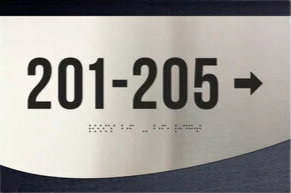PROPERTYSPARK ARTICLE
Everything You Need to Know About Wayfinding Signs
In our increasingly complex and fast-paced urban environments, the importance of clear and effective wayfinding signs cannot be overstated. “Everything You Need to Know About Wayfinding Signs” is a comprehensive guide that delves into the crucial role these navigational aids play in our daily lives. From bustling airport terminals to sprawling hospital complexes, and from intricate shopping malls to vast university campuses, wayfinding signs provide essential guidance to everyone, regardless of whether they are familiar or new to the space. This text explores the intricacies of designing these signs, the psychology behind their effectiveness, and the impact they have on the efficiency and accessibility of public spaces.

Where Should be Wayfinding Signs Placed?
The placement of wayfinding signs is critical for their effectiveness in guiding individuals through various environments. Here are key locations where wayfinding signs should be strategically placed:
- Entrance and Exit Points: Clearly mark all entrance and exit routes to help individuals orient themselves when entering or leaving a building or area.
- Decision Points: Place signs at junctions, intersections, or any point where a person needs to make a decision about which direction to take. This includes the ends of corridors, staircases, and elevators.
- Transitional Areas: In places where there’s a transition from one type of space to another (e.g., from parking areas to building entrances), wayfinding signs are essential to guide the flow of movement.
- High Traffic Areas: Common areas with heavy foot traffic like lobbies, reception areas, main hallways, and central courtyards should have clear signage.
- Amenities and Facilities: Indicate the location of key facilities like restrooms, information desks, cafeterias, and emergency exits.
- Complex Intersections or Corridors: In areas that are potentially confusing or have multiple paths, additional signage can help maintain ease of navigation.
What Should be Included in Wayfinding Signs?
Wayfinding signs are essential tools for navigation and orientation in various environments. To be effective, they should include several key elements:
- Icons and Symbols: Universal symbols or icons can be understood quickly and transcend language barriers. For example, restrooms, elevators, and accessibility features are often represented by standard symbols.
- Directional Indicators: Arrows or other directional cues should clearly indicate the direction to follow.
- Brevity and Simplicity: Keep the information concise and to the point to avoid confusion. Overloading signs with too much information can be overwhelming.
- Hierarchy of Information: The most important information should be the most prominent. Use size, color, and placement to hierarchize information.
- Multilingual Text (if necessary): In areas with a high presence of speakers of multiple languages, providing information in several languages can be helpful.
- Compliance with ADA (Americans with Disabilities Act) or Local Regulations: Ensure that the signage is accessible, which may include Braille for the visually impaired, appropriate height placement, and other accessibility considerations.

Learn how to Become a Top Agent with the Guaranteed 5 Min/Week System
No social media experience needed
Free webinar seat (limited quantities)
Learn the guaranteed 5 min/week system
Become a social media superstar
Constantly get new leads
Beat the competition
Get a special webinar deal
This Agent Tripled His Commissions Just With Social Media
Learn how this real estate agent tripled his commissions just with social media and how you too can become a social media superstar.
Why You Can’t Just “Boost” Your Real Estate Listing
That big blue button has tempted you before right? You want to Facebook Boost your Real Estate listing. Find out why you shouldn’t!
How Much Should Realtors Spend On Social Media
A question we get often from Realtors is “how much should I spend on social media?” Find out exactly how much to spend and how to spend it without getting ripped off!


